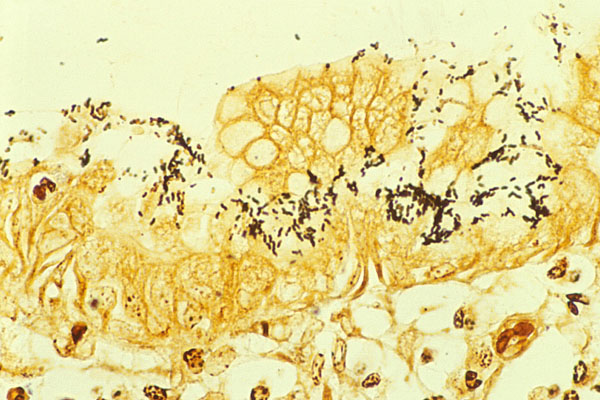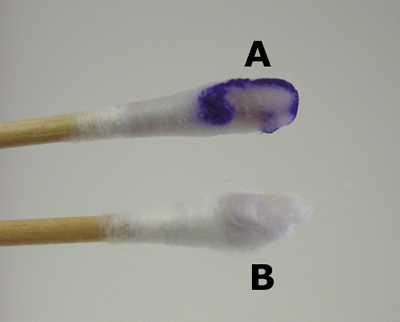Page Contents
WHAT IS IT?
Helicobacter pylori (H. pylori): is a curved gram negative rod bacterium.

Sliver stain can be used for this bacterium.

CULTURE CHARACTERISTICS
Catalase positive: bubbles observed when bacteria are added to hydrogen peroxide
Oxidase positive: a redox indicator will be turned dark blue when oxidized indicating that the bacterium produces cytochrome c oxidases.

MOLECULAR CHARACTERISTICS
Urease positive: this bacteria produces urease that creates an alkaline environment. A urea breath test can be diagnostic for H. pylori colonization.
Antigens excreted in the feces can be used as a diagnostic test as well.
TRANSMISSION
Oral ingestion seems to be the means by which this bacteria is transmitted.
CONDITIONS CAUSED
Gastrointestinal conditions can be caused by this bacteria which include:
- Gastritis (Type B, in the second part of the stomach/antrum)
- Peptic ulcers (leading cause of duodenal, second biggest cause of gastric behind NSAID use)
- Gastric cancer (adenocarcinoma)
- MALT lymphoma/Marginal Zone lymphoma
TREATMENT
Triple therapy (for H. pylori infection + ulcers) is a common treatment regimen that includes
- Proton pump inhibitor (omeprazole): this medication irreversitbly inhibits the H+/K+ ATPase pump in stomach parietal cells, reducing the pH in the stomach.
- Clarithromycin
- Amoxicillin: (metronidazole can be used if penicillin allergy)
OTHER HY FACTS
Gastrin is a GI regulatory substance (which is responsible for proton secretion into the stomach) is increased in chronic atrophic gastritis (that can be caused by H. pylori)
Page Updated: 05.10.2016